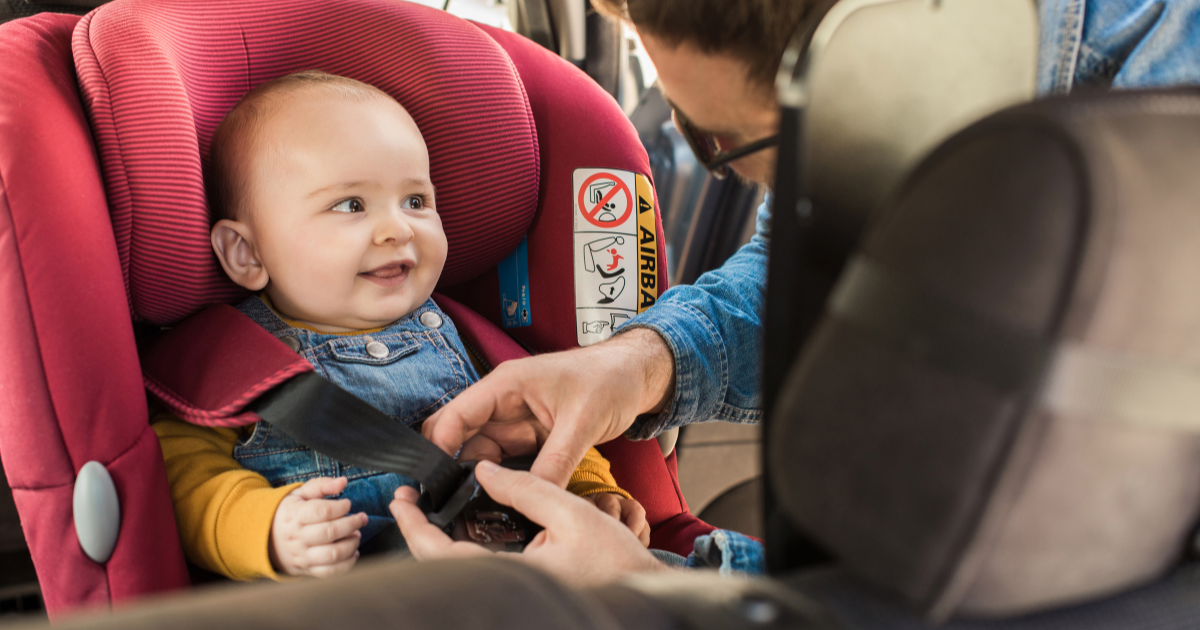
Do Baby Carriers and Car Seats Cause Flat Head Syndrome?
The dramatic rise in the incidence of baby flat head syndrome over the last couple of decades has largely been attributed to the Back to Sleep Campaign. Placing babies on their back to sleep is essential as a means of reducing the risk of Sudden Infant Death Syndrome (SIDS), but if the baby is kept in one position, it can put continual pressure on the back of the head, which can eventually cause a flat spot to emerge.
However, it’s not just babies’ sleeping positions that cause the problem; their activity (or lack of) while awake is just as important. Increasingly, experts have been seeing links between long periods spent sitting in car seats and flat head syndrome – in terms of both incidence and severity. This can also have implications for overall muscle and neural development.
In this new generation of what childcare experts have deemed ‘bucket babies’, carrying devices such as buggies and car seats have become the norm. Manufacturers are coming up with increasingly sophisticated ways to make parents' lives easier, with prams that transform into pushchairs and car seats that become Moses baskets at the press of a button. Unfortunately in this case, parents’ convenience comes at the expense of the babies themselves.
Not only does the overuse of such devices contribute to the likelihood of babies developing flat head syndromes such as positional plagiocephaly; it also prevents them from using their muscles as much as they might. This can impair development and potentially cause the spine, hip and shoulder muscles to remain weaker than they should be for the age that the baby is at. Issues such as these and muscular conditions like torticollis, a muscle imbalance in the neck, prevent normal muscle development from happening as it should.
Car Seats and Flat Head Syndrome: What to Remember
Of course, when you’re taking your baby somewhere in the car, a car seat is essential. However, many parents also use them as carrying devices when they’re out and about and even at home, when really their use should be restricted to short car journeys.
In fact, most devices used to carry or transport babies, including carry cots, buggies and prams, should only be used when absolutely necessary. As a general rule, you should try to remove pressure from the back of the head for at least 50% of the time your baby is awake. This can be achieved by holding them in your arms rather than using a carrier, through ‘tummy time’, and by using a carry sling or backpack carrier, as these don’t apply pressure to the back of the head.
Acclimatised bucket babies often find it difficult to get used to this new way of life, but there are several techniques you can employ to make the process run more smoothly. These can be found in our repositioning guide.
Can Prams also Promote Flat Head Syndrome?
Similarly to carry cots and car seats, prams can encourage flat head syndrome to develop. It is, therefore, incredibly important to choose your little one’s pram carefully. The main factor to consider when choosing a pram, is whether the pram allows your baby to lie flat. Although this may seem counter intuitive given the advice of the Back to Sleep Campaign, ensuring that your pram allows your child to lie flat can help to relieve the symptoms of flat head syndrome.
When in a semi-reclined position, your baby’s movements are restricted, promoting head flattening and contributing to the ever growing rates of torticollis (neck muscle tightness).
When able to lie flat, your baby can roll around, continually redistributing the pressure on their head and reducing the chance of flattening.
What to Do if Your Baby Still Has a Flat Head
If after several weeks of reducing the amount of time your baby spends in car seats and other carrying devices the flat spot hasn’t improved as much as you had hoped, there is another option. By the age of four or five months it is unlikely that the condition will improve greatly without specialist flat head syndrome treatment by means of a helmet.
These gradually remould the skull over a 3 – 6 month period, correcting the head shape gently, visibly and permanently.
Technology in Motion has been providing cranial remoulding treatment to infants across the country for over 10 years with a success rate of over 95%. Browse our website for more information on our clinics and services; or call 0113 218 8030 to enquire about the TiMband.


